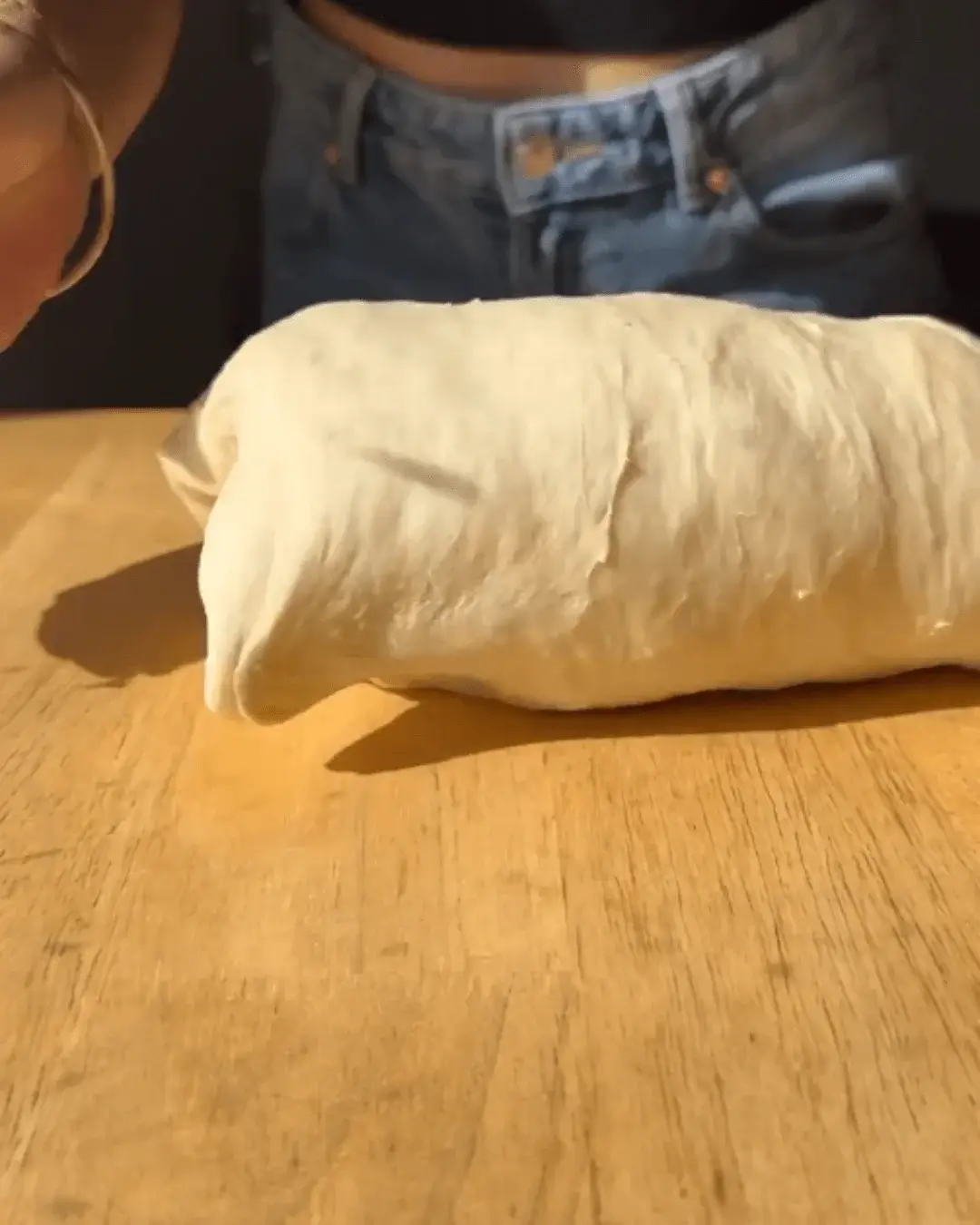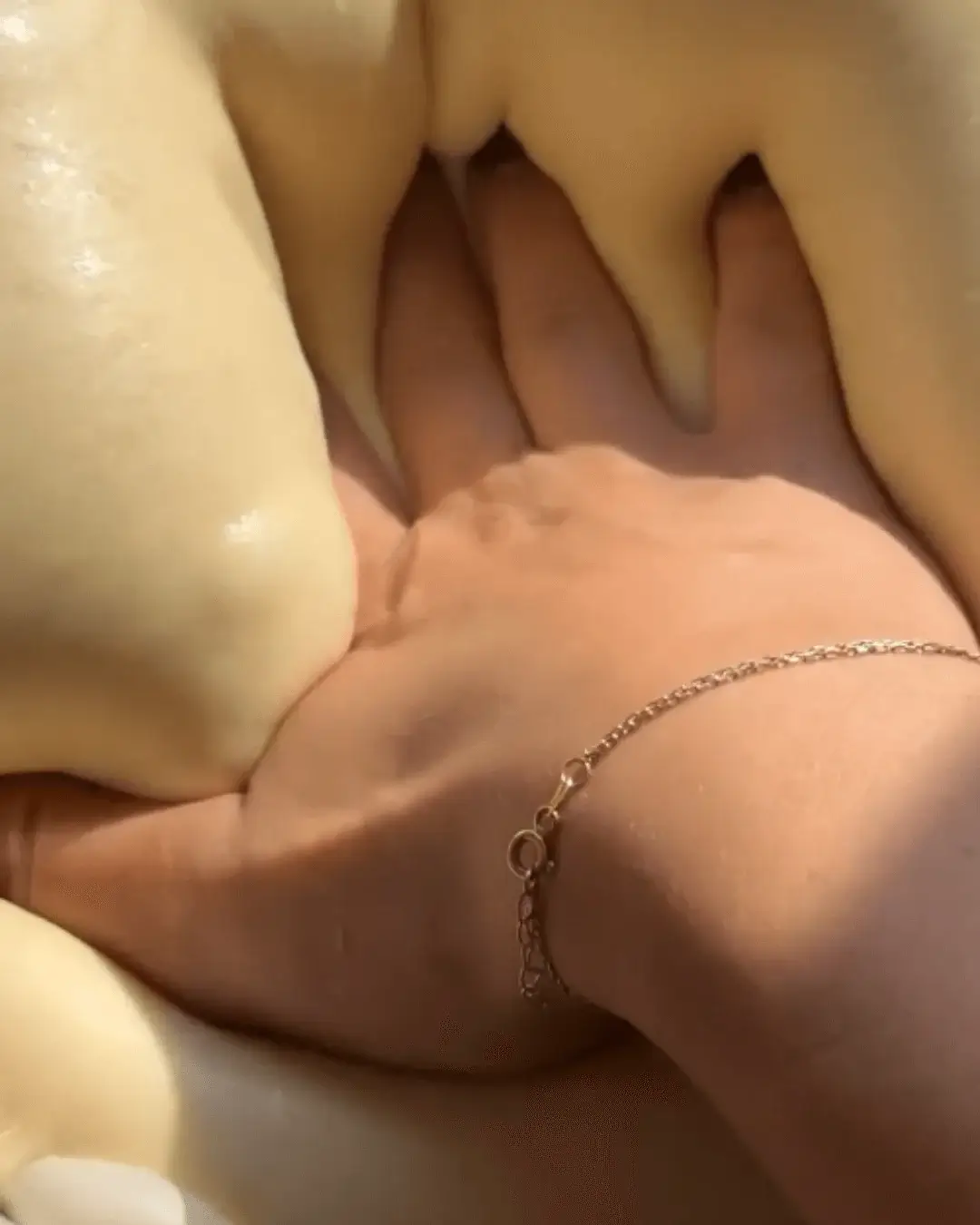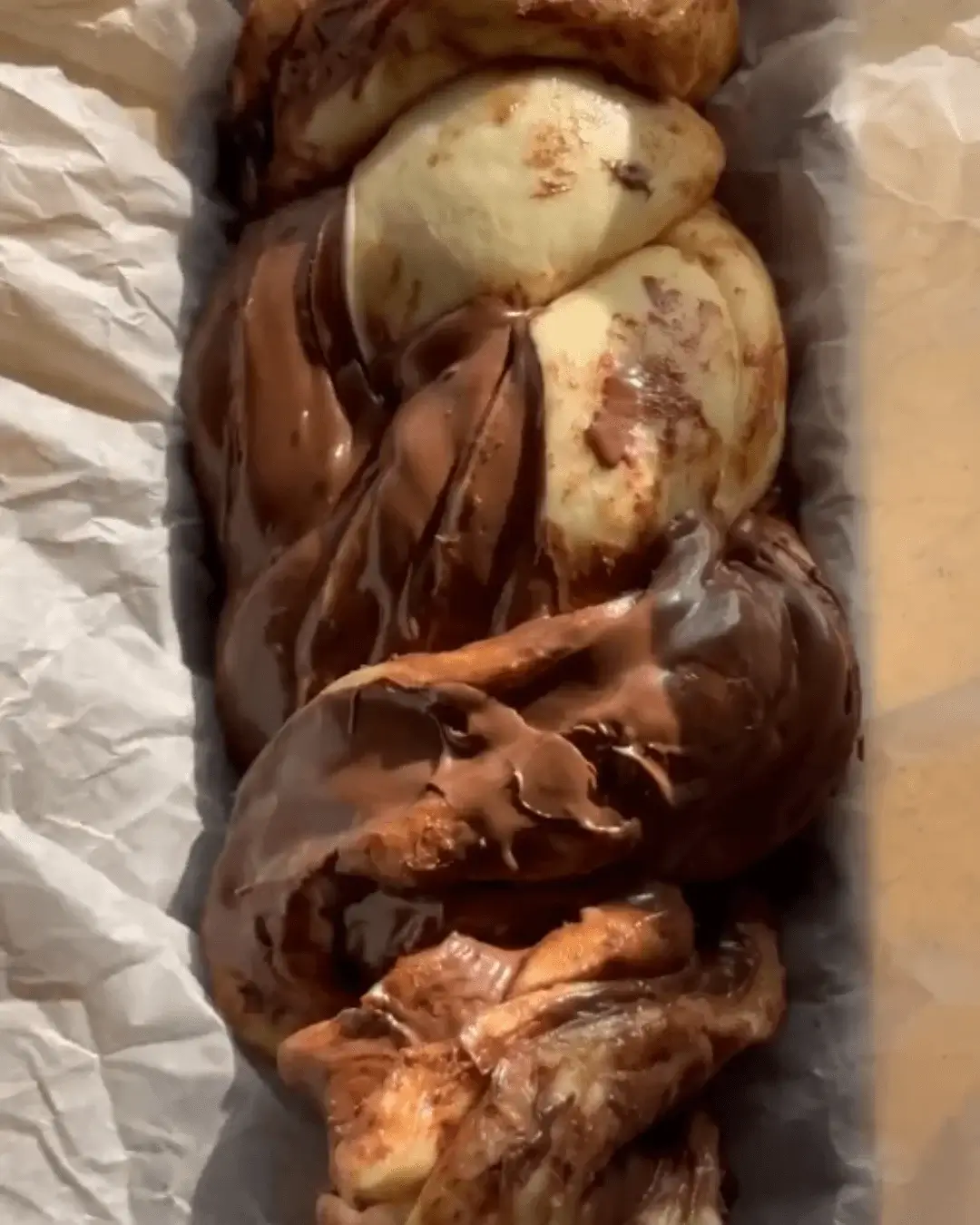Fluffy Nutella Cake Made with Milk Bread
We may earn a commission from recommended products, at no extra cost to you. See Disclosure.
INGREDIENTS
Light roux:
- 2 ounces/60 grams milk
- 2 ounces/60 grams water
- ½ cup/60 grams all-purpose flour
Dough:
- 1 cup/240 grams warm milk
- 5½ cups/700 grams bread flour, or all-purpose flour
- ¾ cup/150 grams granulated sugar
- 2 large eggs, about 3½ ounces/100 grams total
- 7 tablespoons/100 grams cold butter
- 1 tablespoon/10 grams dry yeast
- 2 teaspoons/12 grams fine salt
Glaze:
- ½ cup/100 grams sugar
- ⅓ cup + 1 tablespoon/100 milliliters water
INSTRUCTIONS
Light roux:
- In a small pot, heat the milk and water over medium heat until warm. Gradually add the flour, whisking constantly to avoid lumps. Cook until the mixture thickens into a smooth, dough-like paste. Remove from heat and let it cool to room temperature before using.
Dough:
- In a stand mixer bowl, combine the warm milk, sugar, eggs, and yeast. Mix briefly to combine. Gradually add the flour while mixing on low speed. Once incorporated, knead the dough for about 15 minutes.
- Add the cold butter and salt halfway through kneading. Continue kneading until the dough becomes smooth, elastic, and slightly sticky. Place the dough in a lightly greased bowl, cover with plastic wrap or a clean towel, and let it rise in a warm place until it doubles in size (about 1–2 hours).
- Divide the dough into two equal portions. Roll each piece into a thin rectangle on a lightly floured surface. Spread an even layer of Nutella over each rectangle, leaving a small border around the edges. Roll each rectangle tightly into a log. Pinch the seam closed to secure. Place each log seam-side down in a loaf pan lined with parchment paper. Cover the logs loosely with lightly oiled parchment paper to prevent sticking. Let the dough rise again in a warm place until it nearly reaches the top of the pans (30–60 minutes).
- Preheat your oven to 325°F (165°C).
- Bake the loaves for about 65 minutes. Check for doneness by inserting a toothpick into the center—it should come out clean or with just melted chocolate, not raw dough.
Glaze:
- In a small saucepan, heat the sugar and water over medium heat, stirring until the sugar dissolves completely. Remove from heat and let cool slightly.
- While the loaves are still hot, brush the sugar syrup generously over the tops. Allow the cakes to cool completely in the pans before slicing and serving. This ensures the texture sets properly and prevents tearing. Enjoy your Nutella milk bread cake! 🫶
MY NOTES

FAQ
Can I use a different chocolate spread instead of Nutella?
You can substitute Nutella with any similar chocolate-hazelnut spread or your favorite alternative. Options include store-brand chocolate spreads, dairy-free or vegan versions, or even homemade chocolate spreads. Keep in mind that some substitutes may have different textures or sweetness levels, which could slightly affect the cake’s final taste. If using a thicker or grainier spread, consider softening it slightly in the microwave for easier application. Peanut butter, almond butter, or caramel spreads could also work for a unique twist, but the flavor profile will differ from the classic Nutella-filled version.

What is the purpose of light roux in this Nutella cake recipe?
This light roux is a cooked mixture of flour, water, and milk that acts as a natural dough enhancer. Its purpose is to hydrate the flour and trap moisture, resulting in a softer, fluffier texture for the bread. This method prevents the bread from drying out too quickly and keeps it fresh longer. Adding a roux also helps the dough retain elasticity, making it easier to roll out and shape. If you skip this step, the texture might be drier and less tender, so it’s highly recommended to include it for the best results.

Make this Nutella cake recipe without a stand mixer
You can make this recipe by kneading the dough by hand, but it requires more effort and time. Start by mixing the wet ingredients and incorporating the flour until the dough comes together. Transfer it to a lightly floured surface and knead for 15–20 minutes. Focus on stretching and folding the dough to develop the gluten. Add the butter and salt midway through, kneading until fully incorporated. The dough should become smooth and elastic. Although it takes more physical work, the results will still be delicious. Using a dough scraper can make handling the sticky dough easier.
How do I know if the dough is kneaded enough?
Properly kneaded dough will feel smooth, elastic, and slightly tacky but not sticky. To check, perform the “windowpane test”: take a small piece of dough and stretch it gently between your fingers. If it stretches thin enough to become translucent without tearing, the gluten is well-developed, and the dough is ready. If it tears easily, continue kneading for a few more minutes and test again. Another indicator is the dough’s bounce—when you press it lightly with your finger, it should spring back. Kneading thoroughly ensures a soft and fluffy texture in the finished bread.

Can I use instant yeast?
Instant yeast is more concentrated and doesn’t require activation in warm liquid beforehand. Simply add it directly to the dry ingredients. If the recipe calls for 10 grams of dry yeast, use about 7 grams of instant yeast as a replacement. Since instant yeast acts faster, the rising times may be shorter. Monitor the dough closely to avoid overproofing, which can lead to a dense or overly yeasty-tasting bread. Ensure the liquid used in the recipe is warm (not hot) to help the yeast activate efficiently.

How to prevent the Nutella from oozing out while baking
Ensure the dough is rolled tightly when shaping the logs. Spread a thin, even layer of Nutella, leaving a small border around the edges to seal the roll. Pinch the seam firmly and place the log seam-side down in the pan. Avoid overfilling with Nutella, as excess filling can create weak spots in the dough. You can also chill the Nutella slightly before spreading to keep it thicker. Finally, ensure the loaf is fully proofed before baking to reduce pressure on the dough, which can cause tears and leaks.

Can I freeze the dough or the baked cake?
You can freeze both the dough and the baked cake for later use. To freeze the dough, shape it into logs after the first rise, wrap it tightly in plastic wrap, and place it in a freezer-safe bag. Thaw it overnight in the refrigerator and allow it to rise at room temperature before baking. For the baked cake, let it cool completely, wrap it tightly in plastic wrap, and place it in an airtight container. It can be frozen for up to 3 months. To enjoy, thaw at room temperature and warm it in the oven if desired.
What type of flour works best for this Nutella cake recipe?
Bread flour is the best choice for this Nutella cake recipe because it has a higher protein content than all-purpose flour, which helps develop gluten and creates a chewier, more elastic dough. This is particularly important for enriched doughs like this one, as the added fat from butter and eggs can inhibit gluten development. If bread flour isn’t available, all-purpose flour can be used as a substitute, but the texture might be slightly softer and less structured. Avoid using low-protein flours, such as cake flour, as they won’t provide enough strength for the dough.

How to avoid overbaking or underbaking the Nutella cake
To ensure this Nutella cake is perfectly baked, preheat the oven thoroughly and use an oven thermometer to confirm the temperature is accurate. Bake the loaves on the center rack and avoid opening the oven door too often. Start checking for doneness about 5 minutes before the recommended baking time. Insert a toothpick or skewer into the center of the loaf; it should come out clean or with melted chocolate, not wet dough. If the top browns too quickly, cover it loosely with aluminum foil. Properly baked loaves should sound hollow when tapped on the bottom.
Can I add nuts or other toppings to this Nutella cake?
Absolutely! Adding chopped nuts, such as hazelnuts, almonds, or pecans, to the Nutella layer can enhance the flavor and add a pleasant crunch. Sprinkle the nuts evenly over the Nutella before rolling the dough. You can also add mini chocolate chips, dried fruit, or shredded coconut for variation. Be mindful not to overload the filling, as this could make the dough difficult to roll and seal properly. If you’d like a decorative topping, sprinkle nuts or seeds over the loaf before the final rise or add a drizzle of glaze after baking.

How do I store this Nutella cake?
The baked Nutella cake can be stored at room temperature for 2–3 days in an airtight container or wrapped tightly in plastic wrap to prevent it from drying out. For longer storage, keep it in the refrigerator, where it will stay fresh for up to a week. Before serving, let it come to room temperature or warm it slightly in the oven or microwave to restore its soft texture. To retain the bread’s freshness, avoid slicing it until you’re ready to eat. Freezing is also an option for extended storage (up to 3 months).
Can I make this Nutella cake in a bread machine?
Yes, this Nutella cake recipe can be adapted for a bread machine. Add the ingredients to the machine in the order recommended by the manufacturer, typically starting with the wet ingredients followed by the dry ingredients. Select the dough setting to mix, knead, and allow the dough to rise. Once the cycle is complete, remove the dough, shape it as directed in the recipe, and proceed with the filling and second rise. Keep in mind that bread machines may not handle enriched doughs as well as a stand mixer, so monitor the dough’s consistency during kneading.

What should I do if my dough isn’t rising?
First check the yeast. Ensure it’s fresh and not expired, as old yeast loses its potency. Verify that the liquid used in the recipe wasn’t too hot (above 110°F/43°C), as high temperatures can kill yeast. If the environment is too cold, the dough may rise slowly. Place the bowl in a warm spot, such as near a sunny window or in an oven with the light on. You can also create a warm proofing environment by placing the bowl over a pot of warm water. Be patient, as enriched doughs may rise slower than plain ones.

Can I substitute sugar with a healthier alternative?
Make this Nutella cake with alternatives like honey, maple syrup, coconut sugar, or stevia, depending on your preference. When using liquid sweeteners (like honey or syrup), reduce the liquid in the recipe slightly to maintain the correct dough consistency. Keep in mind that alternative sweeteners can affect the flavor, texture, and browning of the bread. For example, coconut sugar gives a deeper, caramel-like flavor, while stevia may require adjustments in quantity. Test small batches to find the best substitute that works for your taste and dietary needs.

